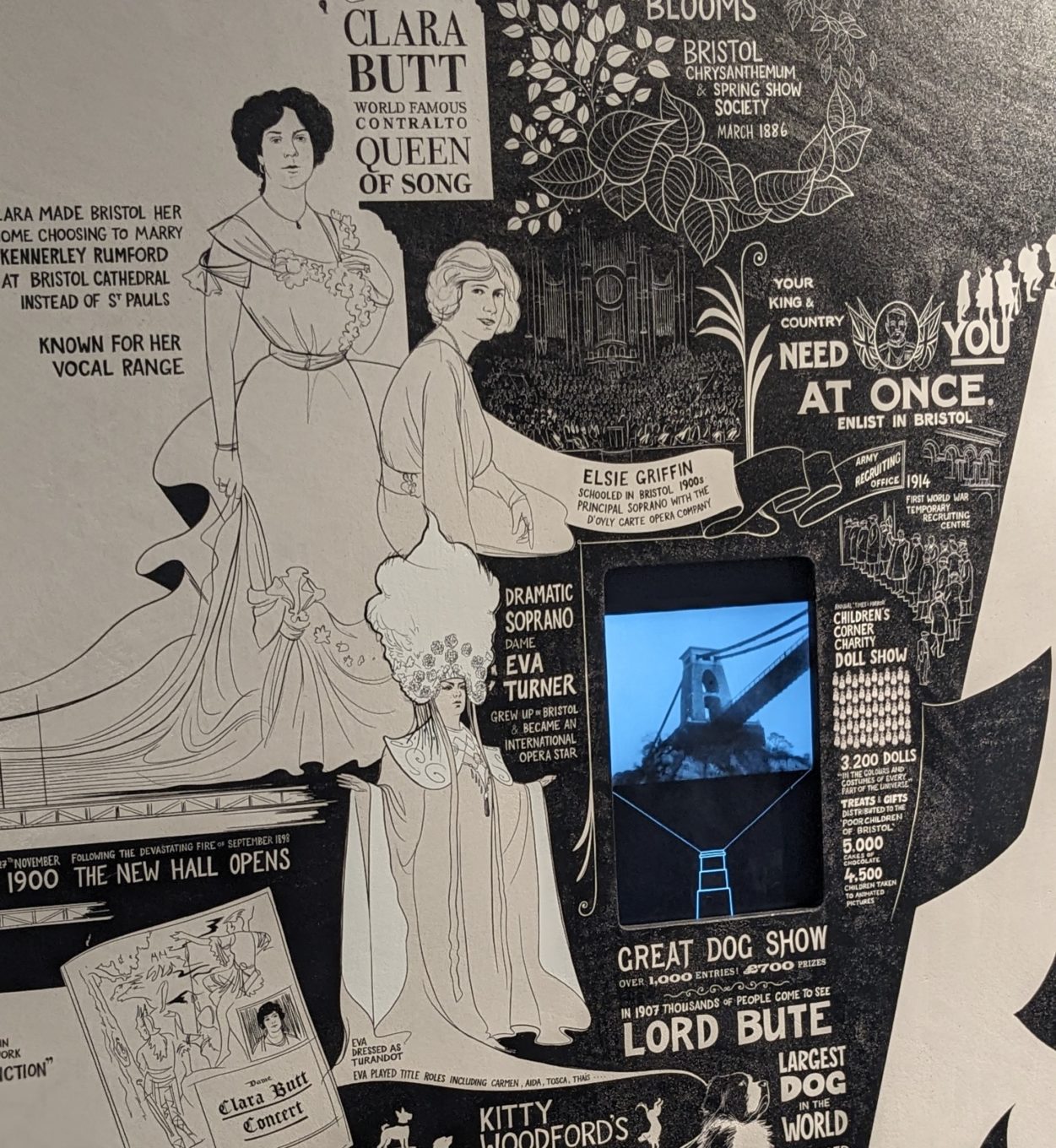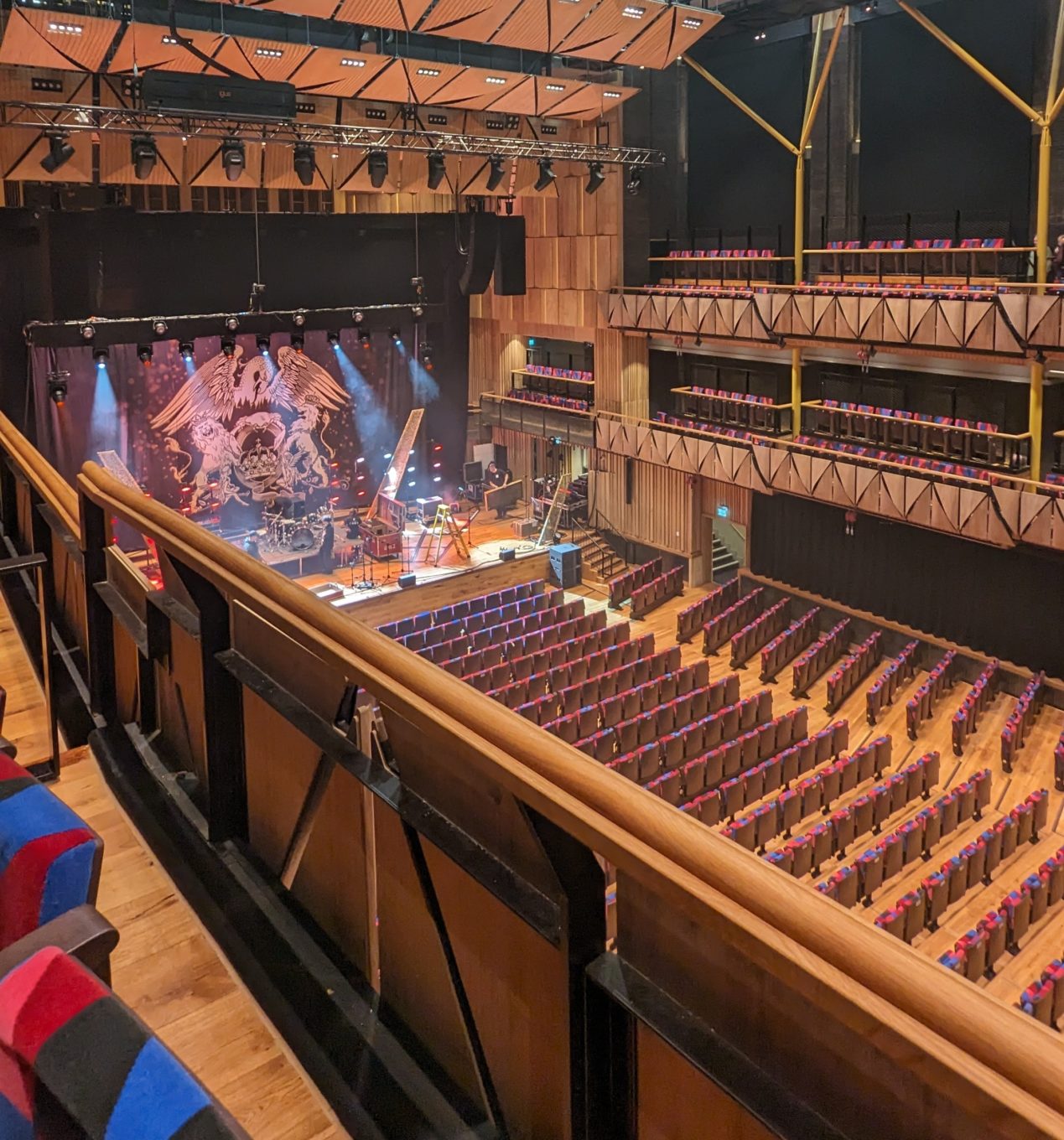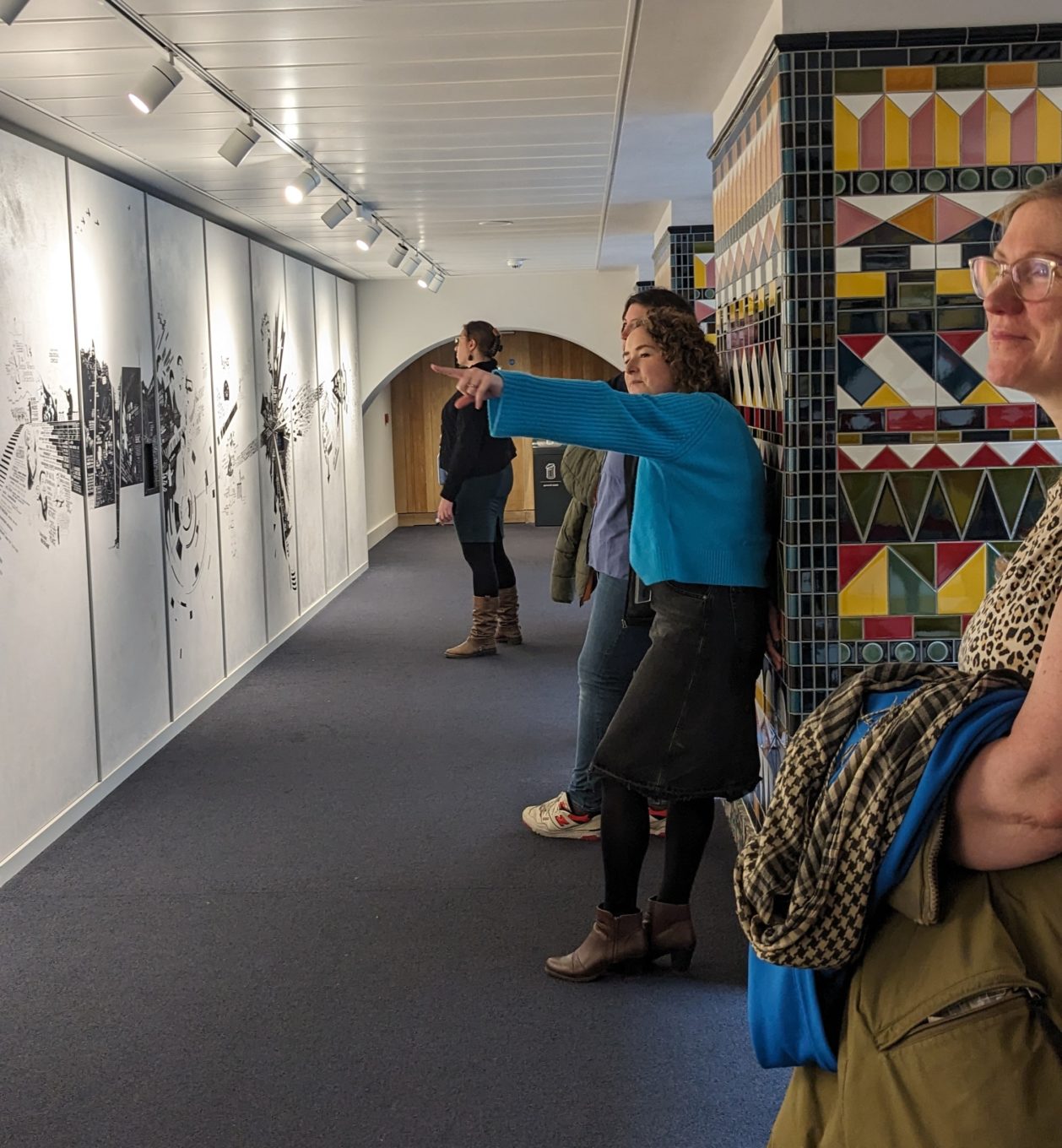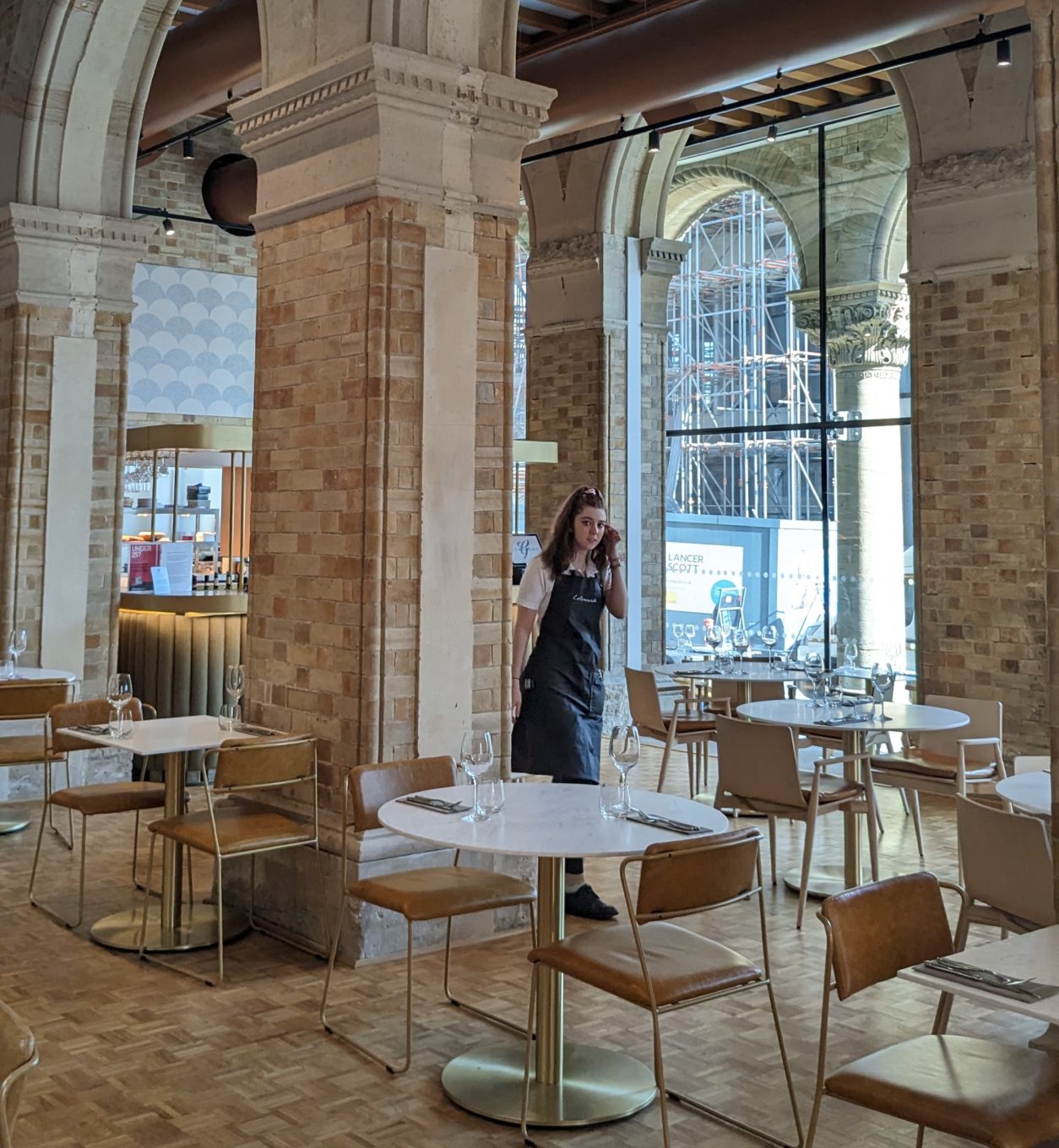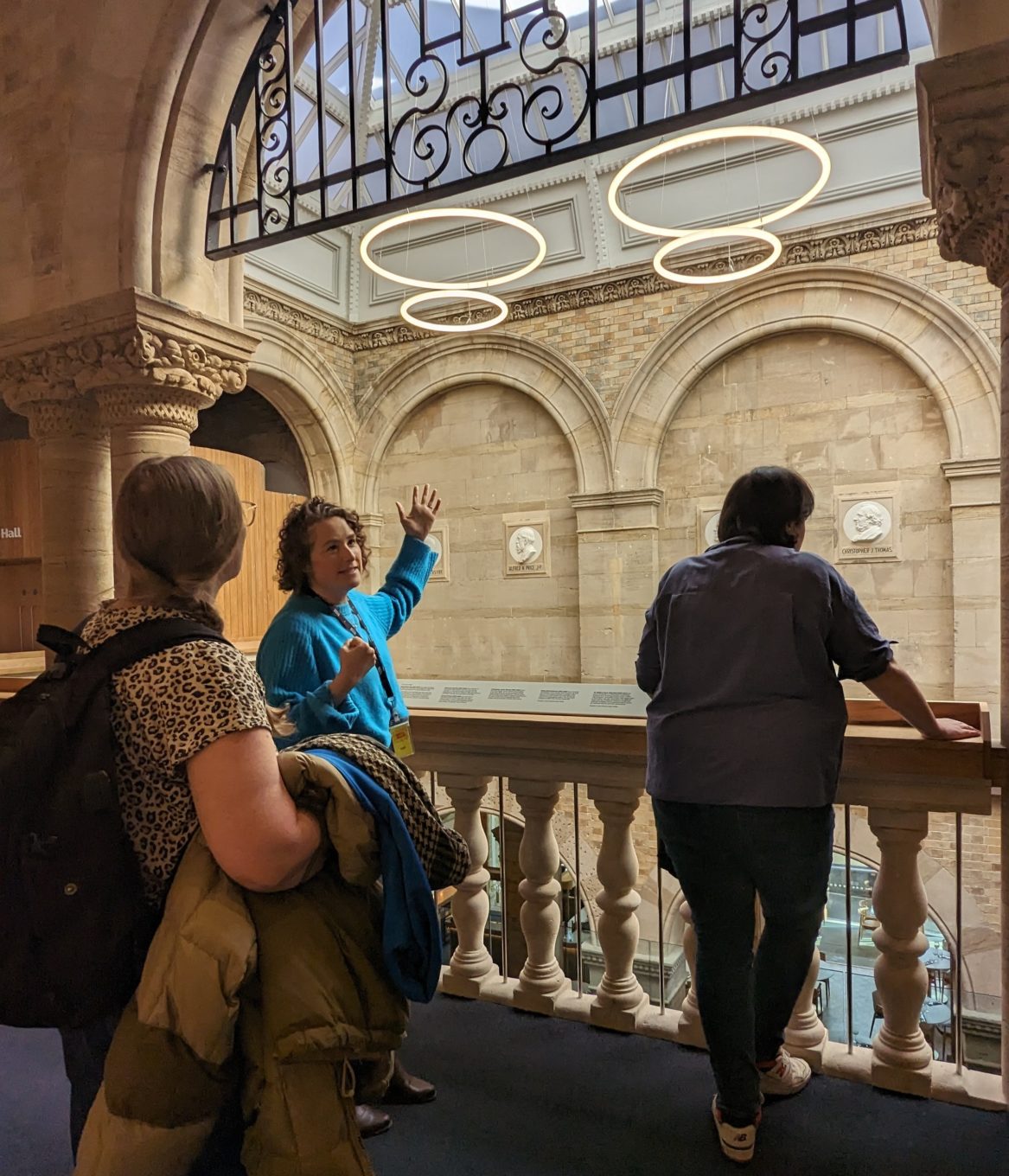Artspace Lifespace Cultural Venue Exchange
Exploring the Historic Transformation: Behind the Scenes at Bristol Beacon.
In March we held our team leaders meeting at Bristol Beacon. We met at the Sound Lounge where we were warmly welcomed by Sarah Robertson, Communications and Special Projects Director, who brought us on a captivating journey behind the scenes of Bristol Beacon. First built in 1867, the Bristol Beacon is a historic venue that has weathered the storms of time, having been burned down twice and resurrected to its former glory. Sarah described to us the remarkable evolution of this iconic space, taken back to its bare brick and infused with new life.
Walk of Fame
Our tour started with the walk of fame highlighting how many world class and iconic artists have played at the Venue.
Balcony Reminiscence and Retrograde Revival
We’re used to stepping into venues with sticky floors and a waft of stale beer so I was struck by how everything smells fresh and new. The former hall had just one balcony, put in place in a 1930s retrograde, when it was envisioned the Beacon may have become a cinema. It now has two balconies and the use of wood throughout creates a warm, comfortable feel with pops of colour provided from the seats designed by artist Rana Begum.
Bob Essert – A Swansong in Sound
Bob Essert was the leading acoustician in the development of the Beacon, his final project before retiring. As the technicians get ready for ‘Queen Extravaganza’ it is evident that his swansong is one to be proud of. The attention to acoustics is meticulous. Not just pretty, the use of wood enhances the sound, with acoustically arranged timber panelling and baffles. From the installation of acoustic drapes that can be lowered or raised, uneven bricks to affect the bouncing sound, and strategically placed archways and baffles, the acoustic design is a symphony in itself. The drapes can be raised or lowered for specific genres, for rock and pop acoustic baffles come down but for last week’s symphony performance the drapes are up. We were very inspired by how the design can add to the venue’s versatility.
Elevating Comfort: Bigger Chairs and Leg Room
An emphasis on audience comfort is evident with the introduction of more spacious seating and enhanced legroom. The ability to remove all chairs creates a flexible floorplate and supports the venue’s adaptability, allowing for a dynamic range of events and performances. Removing the seating used to take 8 hours, it now takes 4. The lantern hall also has seating that can be pulled out easily.
Preserving the Past: Recycled Wood and Artistic Context
Recycled wood from the old building has been reused where possible, connecting the past with the present. The Theatre seating moquette designed by artist Rana Begum was inspired by the 19th Century Bristol Byzantine style reflected in the new interior architecture of the hall.
On the walls of the Lantern Foyer are seven portraits of historic directors and benefactors of Bristol Beacon, formerly known as Colston Hall. The renaming of Bristol Beacon from Colston Hall represented a pivotal moment in the cultural and social landscape of the city. The new name encapsulates the venue’s commitment to inclusivity, diversity, and a forward-looking identity. Roundells Soundscape is a creative response to the portraits created by Cathy Mager as part of City of Beacons; a community engagement project commissioned by Bristol Beacon working with women and non-binary people with hidden disabilities.
The commitment to world class sound has also been integrated into the refurbished Lantern Hall. There are more colourful seat designs from artist Rana Begum with sumptuous drapes over the newly revealed windows. Stone mason marks are visible on window sills.
Sarah showed us one of her favourite pieces of commissioned art, a timeline of the history of Bristol Beacon. She credited Charles Lockier, a Bristolian impresario who staged much of the classical and popular music at the Hall between the 1920s to the 1960s, with saving a huge archive of information including a book containing Ella’s Fitzgerald signature! The Illustrated figures had to be cleverly altered slightly so as not to infringe on any copyright but the illustrations are quite recognisable as the characters they represent.
The Challenges of Historic Buildings
Hollow pillars, remnants of the Elevairate Victorian heating system, tell a story of a bygone era.
Numerous issues were uncovered when the layers of the old building started to be peeled away and resulted in an eye watering increase in costs. Sarah described how a performance in the main hall had to be shut down when a nesting seagull dislodged some asbestos resulting in the building being evacuated. and how the lantern hall was “held together with crisp packets”, and the discovery of historic wells. During the work a number of historic wells were unearthed along with a Victorian hypocaust, a system of sub-floor heating ducts feeding heated air into hollow columns heating grilles above. These hollow columns were filled with rubbish which had to be removed before being made safe. During restoration decaying support for the floor above had to be repaired.
Having faced the devastating challenges of being engulfed in flames not once, but twice and surviving despite being literally “held together by crisp packets” for a number of years, Bristol Beacon is a symbol of endurance and cultural significance in Bristol.
Inclusive Narratives: Audio Descriptions and BSL Interpretations
The commitment to inclusivity shines through with toilets for everyone, irrespective of gender, wheelchair access for visitors and performances, context on Colston Hall and problematic directors and Cathy Mager’s creation of an audio-described version in British Sign Language (BSL). While our meanwhile venues are often restrictive to our users due to lack of lifts, we learned other ways we could be more inclusive such as with the use of colourful QR codes called NaviLens providing support for visually impaired users.
100 Beacons
Following a 100 Beacons campaign from Trinity Centre, Bristol City Council launched The Community Resilience Fund, a one-off capital grant fund to support community and voluntary organisations. Investment in culture and historic buildings should not be a zero sum game and investment in the arts and culture absolutely needs to happen all across the city.
Had the council insisted that staff down tools at Bristol Beacon due to funding restraints the fate of the building may have been much like that of Ashton Court Mansion, an iconic Grade I listed former country house which Bristol City Council purchased in 1959 of which Artspace Lifespace are the meanwhile curators of. In the billiard room of the North West Wing there is part of a replica staircase. I’ve been told that during the planned restoration work, a decision was made to spend funding on a school instead and the workmen were told to down tools. The North West Wing was devastated by an arson attack in 2013, 80% of the building is now derelict and the remainder of useable space is declining. Walking around Bristol Beacon and seeing the buzz in the venue, I wished more buildings could receive the same level of care.
A Vision for the Future: Performance and Education Spaces
Our journey concluded with a glimpse into the future – new performance and education spaces in the cellar which sadly we couldn’t visit as the cellars were in use. These additions will undoubtedly contribute to Bristol Beacon’s ongoing legacy as a hub for cultural enrichment and artistic expression.
We were delighted to tour Bristol Beacon and celebrate its resilience, accessibility and delighted to hear that since it has opened, it has bucked the bleak picture being painted for Music Venues and is thriving. This historic venue, steeped in stories and surrounded by the echoes of performances past is now a world class destination. Investment in Bristol Beacon has delivered a world-class venue for generations to come as well as preserving our remaining Bristol Byzantine heritage.
Celebrating our Cities Cultural Spaces – Cultural Venues Exchange
Over the next year our team plan to take more time out to rest and be inspired by other cultural venues and the diverse cultural tapestry that makes Bristol such a great city to live in. So often as administrators in the arts, we get so caught up with managing the day-to-day that we forget to seek inspiration beyond our immediate surroundings. It was a pleasure to take time out with our team and be inspired by another cultural space. We look forward to our cultural venue exchange when we bring the team at the Bristol Beacon for a visit to The Island and Sparks later this month to explore our spaces.
Written by Kathryn Chiswell Jones, Company Manager of Artspace Lifespace.
